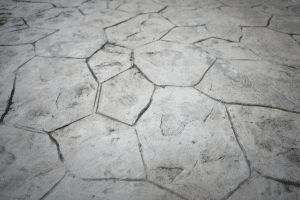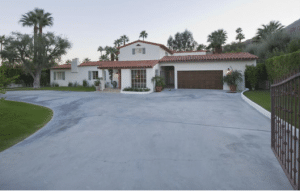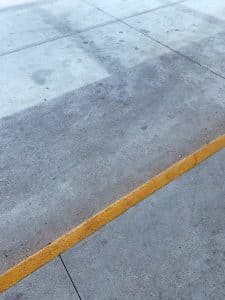Introduction
Welcome to our blog post, where we discuss common concrete problems and provide solutions to help you maintain and enhance the appearance of your property. Concrete is a versatile and durable material used in various construction projects, but it can encounter issues over time. Whether you’re dealing with cracks, uneven surfaces, discoloration, or pitting, we’ve got you covered. In this article, we’ll delve into the causes behind these problems and present effective methods for fixing them. So, let’s dive in and discover how you can overcome common concrete challenges!
Common Concrete Problems
Cracks in Concrete
One of the most frequent issues with concrete is the appearance of cracks. These cracks can occur due to various reasons, such as:
- Shrinkage: Concrete naturally shrinks as it cures, leading to small cracks known as shrinkage cracks.
- Freeze-thaw: In colder climates, water can penetrate concrete, freeze, and expand, causing cracks.
- Settlement: Poor soil conditions or improper compaction can result in concrete settling and developing cracks.
To address cracks in concrete, several repair methods can be employed, including:
- Crack Injection: This technique involves injecting specialized materials into the cracks to seal and reinforce them, preventing further damage.
- Concrete Resurfacing: Resurfacing the concrete surface with a layer of fresh concrete or overlay can conceal small cracks and provide a renewed appearance.
Uneven or Sunken Concrete
Uneven or sunken concrete is not only an eyesore but also a potential tripping hazard. Common causes of uneven concrete include:
- Erosion: Soil erosion beneath concrete slabs can cause them to sink and become uneven.
- Improper Installation: Inadequate compaction during the initial installation can lead to uneven concrete surfaces.
To rectify this problem, concrete leveling techniques come to the rescue. This process involves:
- Slabjacking: Slabjacking is a method in which a grout mixture is injected beneath the sunken concrete, raising it to its original position.
- Polyurethane Foam Injection: This technique uses expanding foam injected beneath the concrete, which fills voids and raises the sunken slab.
Spalling and Scaling
Spalling and scaling refer to the flaking, peeling, or chipping of the concrete surface. These issues can arise due to:
- Freeze-thaw Cycles: Repeated freezing and thawing can cause moisture to penetrate the concrete, leading to surface deterioration.
- Excessive Moisture: Poor drainage, water leaks, or high humidity can contribute to spalling and scaling.
- Chemical Exposure: Exposure to certain chemicals, such as de-icing salts, can accelerate concrete deterioration.
To address spalling and scaling, surface repair methods can be employed, such as:
- Concrete Patching: Patching damaged areas with new concrete can restore the structural integrity and aesthetic appeal of the surface.
- Surface Coatings: Applying protective coatings, such as sealers or epoxy coatings, can provide an extra layer of defense against moisture and chemical damage.
Concrete Discoloration
Concrete discoloration can be a frustrating problem, as it affects the overall appearance of the surface. Some common causes of discoloration include:
- Improper Mixing: Inconsistent mixing of concrete ingredients can result in color variations.
- Exposure to UV Rays: Prolonged exposure to sunlight can cause concrete to fade or change color.
- Chemical Reactions: Certain chemicals or contaminants can react with concrete, causing discoloration.
To restore the original color and vibrancy of the concrete, the following steps can be taken:
- Pressure Washing: Using a pressure washer can help remove surface stains and dirt, revealing the true color of the concrete.
- Stain Removal: Applying specialized stain removers or poultices can effectively eliminate stubborn discoloration.
- Concrete Staining: If desired, concrete staining techniques can be used to enhance the appearance of the surface, providing a fresh and consistent color.
Concrete Pitting
Concrete pitting refers to the formation of small, crater-like holes on the surface. Several factors can contribute to this issue, including:
- Freeze-thaw Cycles: Similar to spalling and scaling, repeated freezing and thawing can cause pitting in the concrete.
- Chemical Exposure: Certain chemicals, including acids and harsh cleaning agents, can erode the surface and lead to pitting.
Repairing concrete pitting involves the following steps:
- Cleaning and Preparation: The damaged area is thoroughly cleaned and prepared, ensuring proper adhesion of the repair materials.
- Patch Application: Specialized patching compounds or resurfacing products are used to fill in the pits and create a smooth surface.
How to Fix Concrete Problems
Now that we’ve discussed the common concrete problems, let’s explore the effective solutions to fix them.
Crack Repair
When it comes to crack repair, the specific method depends on the severity and extent of the cracks. For hairline cracks or minor surface cracks, a simple crack filler or sealant can be applied to prevent further water infiltration and stabilize the concrete. However, for more significant cracks, professional assistance may be required. Crack injection techniques, such as epoxy or polyurethane injections, are commonly used to effectively seal and reinforce larger cracks, restoring the structural integrity of the concrete.
Concrete Leveling
To address uneven or sunken concrete, concrete leveling techniques can be employed. The two primary methods used are slabjacking and polyurethane foam injection. In slabjacking, small holes are drilled into the concrete, and a grout mixture is injected beneath the slab, lifting it to its proper position. Polyurethane foam injection, on the other hand, involves injecting expanding foam that fills voids and raises the sunken slab. Both methods provide long-lasting results and eliminate tripping hazards.
Surface Repair
Spalling, scaling, and surface discoloration can be effectively repaired through surface repair techniques. Concrete patching involves removing the damaged portions of the concrete and replacing them with fresh concrete. This method restores the structural integrity and smoothness of the surface. Additionally, applying sealers or epoxy coatings can protect the concrete from further damage and enhance its appearance.
Stain and Discoloration Removal
For stubborn or deep stains, specialized stain removers or poultices can be applied. These products penetrate the concrete and lift the stains, restoring the original color. In some cases, concrete staining techniques can be used to enhance the appearance of the surface. Stains or dyes are applied to the concrete, transforming its color and creating a vibrant, customized look.
Pitting Repair
To repair concrete pitting, the damaged area needs to be cleaned and prepared. This involves removing loose debris and ensuring a clean surface for proper adhesion. Once the area is prepared, specialized patching compounds or resurfacing products are applied to fill in the pits and create a smooth surface. These repair materials are specifically designed to withstand the elements and provide long-lasting results.
Frequently Asked Questions (FAQ)
1. What causes cracks in concrete?
Cracks in concrete can be caused by various factors, including shrinkage during the curing process, freeze-thaw cycles in colder climates, and settlement due to poor soil conditions or improper compaction during installation.
2. How can uneven or sunken concrete be fixed?
Uneven or sunken concrete can be fixed through concrete leveling techniques such as slabjacking and polyurethane foam injection. These methods involve lifting the sunken slab and restoring it to its original position.
3. Why does concrete spall and scale?
Concrete spalling and scaling are often the result of repeated freeze-thaw cycles, excessive moisture, or chemical exposure. These factors can cause the surface to deteriorate, leading to flaking, peeling, or chipping.
4. How can I remove stains and discoloration from concrete?
Stains and discoloration on concrete surfaces can be removed through pressure washing with appropriate cleaning solutions. For stubborn stains, specialized stain removers or poultices can be applied. Concrete staining techniques can also be used to enhance the appearance of the surface.
5. What is the process for repairing concrete pitting?
To repair concrete pitting, the damaged area is cleaned and prepared. Then, specialized patching compounds or resurfacing products are applied to fill in the pits and create a smooth surface.
Conclusion
At Utah Concrete Lifting, we understand the common problems that can affect concrete surfaces. Cracks, unevenness, spalling, discoloration, and pitting can diminish the beauty and functionality of your concrete. However, with the right knowledge and techniques, these problems can be effectively addressed and resolved.
By utilizing crack repair methods, concrete leveling techniques, surface repair solutions, stain removal processes, and pitting repair strategies, we can restore your concrete surfaces to their original condition. Our team of experts is equipped with the necessary skills and experience to tackle any concrete problem and deliver exceptional results.
Don’t let common concrete problems overshadow the beauty of your property. Contact us today at 801-396-0391 or visit our website here to request our professional services. Let us help you maintain and improve your concrete surfaces, ensuring a safe and visually appealing environment.



